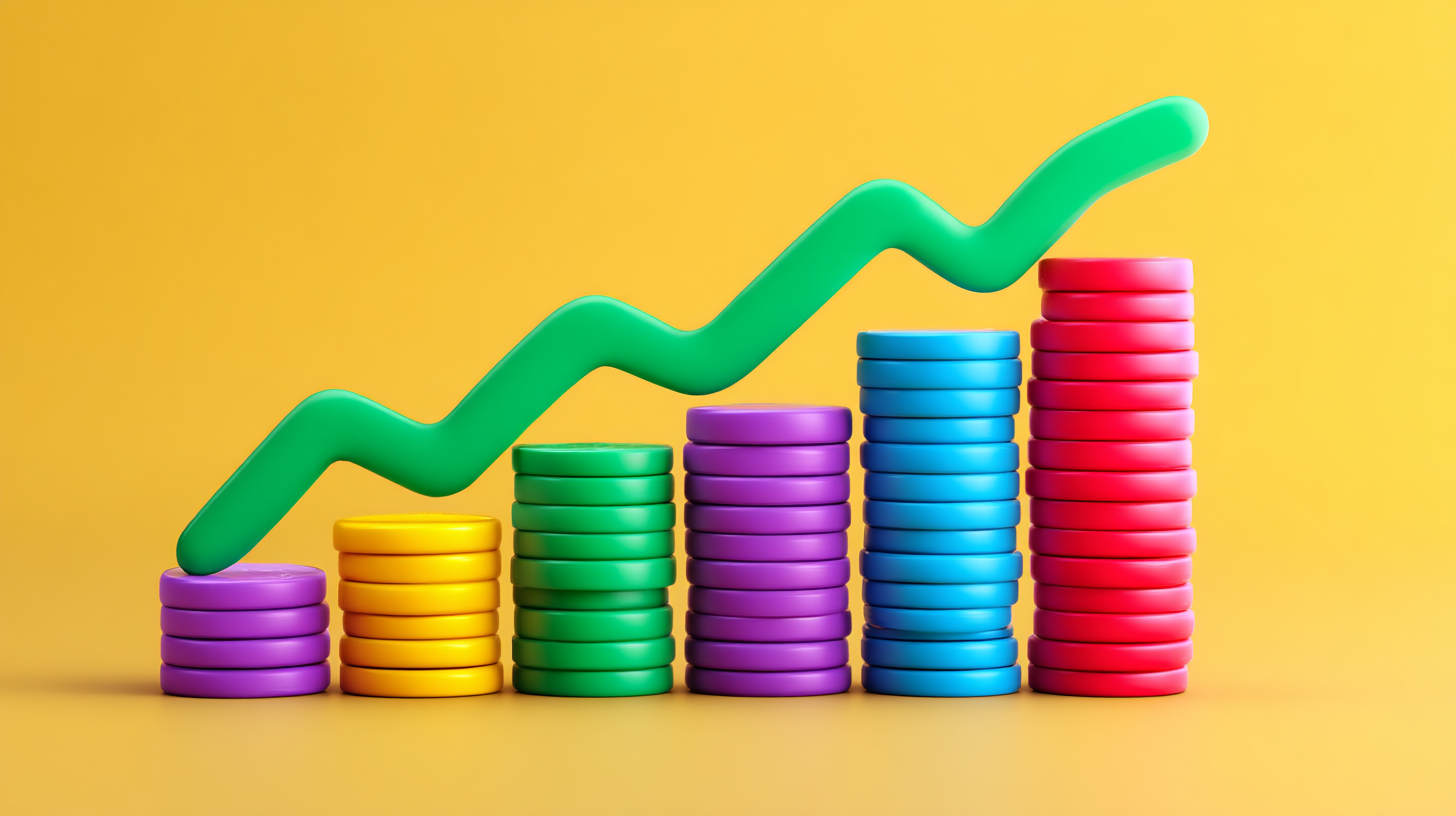I’ve always been fascinated by the idea of making money while I sleep—who wouldn’t want a steady stream of income rolling in without clocking extra hours each day? That’s exactly what got me into dividend investing. In this post, I’ll share my personal journey into the world of dividends, why I believe 2025 is a milestone year for passive income seekers, and how you can build your own portfolio to create wealth over time. I’ll break down the strategies, tools, and considerations needed, so you can confidently start—or refine—your dividend investing approach for sustainable income growth.

Understanding Dividend Investing
Dividend investing is a strategy where I buy stocks (or funds) that regularly pay out a portion of their profits to shareholders. These payouts are called dividends. Over time, dividend payments can form a steady passive income stream, making them appealing to those looking to grow their wealth without relying solely on price appreciation.
One of the reasons I love dividends is that they bring a sense of stability. Even if the market price of a stock dips, I still receive my dividend checks. Sure, dividend payments can change, and companies sometimes reduce or suspend them. But if you focus on strong companies with reliable, consistent profits, dividends can be a powerful way to get paid for simply holding shares.
Even better? Reinvesting those dividends (which I’ll talk more about later) can supercharge your results. Each time you reinvest, you’re using your own earnings to buy more shares, which leads to even more dividends down the road—creating a snowball effect for your portfolio. It’s like compound interest on steroids.
To really nail this down, I often look beyond just the dividend yield (the percentage a company pays out relative to its share price). Metrics like the payout ratio, dividend growth rate, and the company’s overall stability also matter a lot. By focusing on these factors, I create a dividend strategy that can weather market ups and downs while steadily paying me to stay invested.
Why Dividends Matter in 2025
A lot of people ask me: “Why 2025? What’s so special about this year?” Well, I see it as a turning point for several reasons. The global economy continues to shift, with new industries emerging, interest rates fluctuating, and digital innovations changing the way we manage our finances. The result is an environment where more and more people are hungry for predictable income streams that can help them ride the waves of market volatility.
Dividends are a tried-and-true method for earning passive income, but in 2025, I believe they’ll play an even bigger role. For one, as technology evolves, it’s easier than ever to analyze companies with techniques like Natural Language Processing (NLP) and advanced data analytics. People can sift through annual reports, earnings calls, and news articles to gauge a company’s financial health and sentiment more accurately. This can help us pinpoint businesses that are likely to maintain or increase their dividends.
Moreover, I expect more established companies, especially in sectors like technology, healthcare, and renewable energy, to start or continue paying dividends to attract a larger pool of investors seeking stability. This shift means a wider variety of dividend-paying stocks to choose from—making it simpler to diversify your portfolio.
Finally, with economies adjusting to post-pandemic realities, companies that have survived and thrived during turbulent times often demonstrate resilience. Those that consistently pay (and grow) dividends reflect a healthy cash flow and a commitment to rewarding shareholders. In short, 2025 is shaping up to be a year of opportunity for dividend investors who want a combination of growth and security in their portfolios.
Building a Dividend Portfolio

One of the most exciting parts of dividend investing is designing a portfolio tailored to your goals and risk tolerance. For me, it starts with asking these questions:
- What are my income goals? Am I looking for a supplementary income stream right now, or am I aiming to build significant wealth over the long haul?
- How much risk am I comfortable with? High-yield stocks can offer bigger payouts, but they may carry more risk if a company’s profitability wavers.
- What’s my time horizon? Longer time frames allow the compounding effect to work its magic, while shorter time frames might require a more balanced approach.
I usually group my dividend picks into categories:
| Category | Examples | Why I Like Them |
| High-Yield | REITs, Utilities | Immediate income, often stable but can be riskier |
| Dividend Growth | Blue-Chip Tech, Industrials | Reliable companies that consistently raise dividends |
| International | Global Telecom, Energy | Geographic diversification and exposure to different markets |
Spreading investments across these categories helps me balance yield and growth. I also pay attention to the payout ratio—the percentage of earnings used for dividends. A ratio under 60% often indicates a company is comfortably paying dividends without straining its finances.
Additionally, I look at dividend history. Companies with a track record of raising dividends year after year, sometimes called Dividend Aristocrats, can be safe bets for long-term investing. This, combined with analyzing market trends and company fundamentals through modern analytics (including NLP), helps me pick winners.
Remember, building your dividend portfolio is a personal journey. While I’m happy to share what’s worked for me, always do your own due diligence. Over time, you’ll find what suits your goals and risk tolerance best.
My Favorite Dividend Strategies
Over the years, I’ve tested various ways to squeeze the most value out of dividends. Here are a few strategies that have stood out:
- Dividend Reinvestment Plans (DRIPs)
DRIPs allow me to automatically reinvest my dividends into buying more shares of the same company—no extra fees (in many cases), and no hassle. This creates a compound effect that can significantly boost my overall returns. It’s one of the simplest ways to grow my portfolio without having to remember to do anything extra. - Core and Satellite
I love to maintain a “core” set of rock-solid, dividend-paying stocks—think large, established corporations with a record of stable payouts. Then I add “satellite” positions in higher-growth or niche sectors that can potentially deliver bigger dividends in the future. This approach balances stability with the opportunity for higher returns. - Dividend Growth Investing
Instead of focusing on yield alone, I zero in on companies that consistently increase their dividends. This strategy aligns well with a long-term mindset. These firms often have strong business models, decent market share, and the resilience to weather economic storms. - Sector Rotation
This strategy involves shifting dividends into sectors poised for growth. For example, if I believe tech companies will have a strong quarter, I might allocate more funds to dividend-paying tech stocks. However, this can be more hands-on and might not suit everyone.
All these strategies rely on consistent research and monitoring. Dividend investing isn’t complicated, but it does benefit from staying in tune with market trends, earnings reports, and analyst insights. Use easy-to-understand tools or even advanced methods like NLP-based sentiment analysis, if you’re into data, to help you spot red flags or confirm promising opportunities.
Tax Considerations
Taxes can take a bite out of your earnings, which is why it’s crucial to understand the tax implications of dividend investing. In many countries, dividends are treated as taxable income, but the exact rate can vary. Some dividends are qualified for lower tax rates if you’ve held the stock for a specific period, while others are considered non-qualified and taxed at higher ordinary income rates.
In my experience, proper tax planning is just as important as picking the right stocks. For instance, if I’m investing through a tax-deferred account (like an IRA in the United States), those dividends can grow tax-free until I start making withdrawals. This can significantly impact my total returns over the long term.
I also pay attention to international stocks, as they might involve foreign taxes. Many countries withhold a portion of dividends for taxes, so I might need to complete extra paperwork or consult a tax advisor to ensure I receive a credit or deduction.
It’s wise to consult resources like the IRS official page (for U.S. investors) or your local tax authority to stay updated on changes in tax laws. Another excellent resource for understanding the tax treatment of dividends is Investopedia—they offer user-friendly guides to help you navigate the complexities.
Finally, while I’m not a tax professional, I’ve found that keeping records of all my dividend payments, tracking the holding period, and consulting a qualified advisor as needed saves me from nasty surprises. Overlooking taxes can reduce my effective returns, so I make sure to stay informed and organized to keep as much of those dividend checks as possible.
Monitoring & Re-balancing
Dividend investing isn’t a “set it and forget it” strategy—though it’s more hands-off than many others. It’s important to monitor your portfolio to ensure it still meets your goals. When I say “monitor,” I’m usually checking:
- Dividend consistency: Has the company maintained or increased its dividend payout?
- Financial health: Is the company’s revenue, profit, and payout ratio stable or improving?
- Market shifts: Are new players entering the market that might offer better yields or growth potential?
If a stock cuts or suspends its dividend, that’s a significant red flag. I might exit that position and look for opportunities elsewhere. However, I won’t sell in a panic just because of a temporary dip in stock price—part of the beauty of dividends is receiving a payout while I wait for the market to recover.
Re-balancing is another step. Let’s say my technology dividend stocks soar, causing them to make up a huge chunk of my portfolio. That might skew my overall risk profile. I could re-balance by trimming some of my tech positions and reinvesting in undervalued sectors—think utilities, consumer staples, or real estate investment trusts (REITs)—to keep my portfolio diversified.
I like to review my portfolio at least quarterly. During these check-ins, I’ll see if my allocations align with my goals, whether any stock’s fundamentals have changed, and if my overall strategy is still valid. This approach keeps my dividend train on track, fueling steady (and potentially growing) income while also managing risk.
Investing in Dividend-Focused ETFs
While picking individual stocks can be exciting, it also requires in-depth research and regular tracking. That’s where Dividend-Focused ETFs (Exchange-Traded Funds) come into play. An ETF pools together multiple dividend-paying companies, offering immediate diversification in a single purchase.
I find dividend ETFs especially useful when I’m short on time or want to spread out risk across various sectors. Some popular dividend ETF categories include:
- High Dividend Yield ETFs: These often target companies known for paying higher-than-average dividends.
- Dividend Growth ETFs: These focus on firms with a history of increasing dividends over time.
- International Dividend ETFs: These provide global exposure, adding another layer of geographic diversification.
One thing to consider is the expense ratio—the annual fee charged by the ETF. While it might seem small at first glance (like 0.30% or 0.40%), it can add up over many years. I make sure the ETF’s performance justifies these costs.
Additionally, I look at turnover ratio (how often the ETF changes its holdings) and index methodology (how it selects dividend-paying companies). Understanding these details helps me pick an ETF that aligns with my dividend goals. Some ETFs might prioritize yield over growth, while others could focus more on consistent dividend hikes, which might come with a lower yield but higher potential for long-term income boosts.
ETFs also make dividend investing more accessible. By simply buying a few shares of a dividend ETF, I gain exposure to dozens—or even hundreds—of dividend-paying companies. This is particularly appealing for new investors who want a piece of the dividend pie without pouring hours into stock analysis.
Avoiding Common Dividend Investing Pitfalls
Dividend investing isn’t without its traps. I’ve stepped on a few landmines in my time, and I’m happy to share how to avoid them:
- Chasing High Yields
It’s tempting to go for a stock that boasts a massive dividend yield. But sometimes, a high yield could be a warning sign that the company’s share price is down due to poor performance, making the yield percentage look bigger than it should. Always check the company’s fundamentals and whether the dividend is sustainable. - Ignoring Payout Ratios
If a payout ratio is too high (e.g., over 80%), the company may have to stretch its budget to keep paying dividends. This can lead to cuts when times get tough. I aim for businesses that maintain a sensible payout ratio that leaves room for future growth. - Over-Concentration
Putting all your eggs in one sector or a handful of stocks can be risky. If one company slashes its dividend or an entire sector struggles, your passive income could take a big hit. Spread your investments across different industries and even geographic regions if possible. - Neglecting Portfolio Updates
The market moves fast. Companies that were dividend darlings five years ago might not hold that status today. Regularly checking dividend announcements, earnings reports, and analysts’ forecasts helps me stay ahead of potential cuts or downturns. - Overlooking Fees
When buying dividend stocks through certain brokers or investing in dividend ETFs, keep an eye on trading fees and expense ratios. These costs can chip away at your returns over time.
By steering clear of these pitfalls, I’ve found it much easier to keep my dividend strategy on track. Mistakes are part of the learning curve, but with smart planning and awareness, you can avoid the major ones.
The Power of Reinvestment
I often refer to reinvestment as the secret sauce of dividend investing. Every time I earn a dividend, I have two options: spend it or reinvest it. If I’m aiming to grow my wealth and passive income stream, reinvesting is usually the smarter move.
Why is reinvestment so powerful? Because it leverages the magic of compounding. When I use my dividends to buy more shares, I increase the number of shares I hold. More shares mean more dividends next time around, which I can reinvest again—creating a self-fueling cycle of growth.
Here’s a simple example: Let’s say a stock costs $100 and yields a 4% dividend. If I own 100 shares, I’ll earn $400 in dividends. If I reinvest those $400 back into the stock, I can buy 4 additional shares (ignoring price changes for simplicity). Next time dividends are paid, I’ll own 104 shares, which will pay even more in dividends.
While this might not look like a huge difference in year one, by year five or ten, it can dramatically multiply my total returns. Reinvestment is especially effective when I’m not relying on dividends as immediate income to cover daily expenses. If you’re in the phase of building wealth, this is a must.
Of course, reinvestment can be done manually or through programs like DRIPs. Either way, the principle remains the same: let your money make more money for you. Over time, this compounding effect can turn modest dividend yields into a robust stream of passive income, all by simply choosing to reinvest instead of cashing out.

External Links
Conclusion
Dividend investing has been one of the most rewarding financial journeys I’ve embarked upon. There’s something incredibly satisfying about watching those consistent payouts hit my account and knowing that I’m steadily building wealth—even when I’m not actively working.
In this post, I’ve walked you through the what, why, and how of dividend investing, focusing on the strategies I find most effective for 2025 and beyond. From understanding the fundamentals of dividends to leveraging tools like NLP-driven analysis, there’s a wealth of opportunity for anyone looking to generate long-term passive income.
Remember, the best dividend portfolio is one that aligns with your personal goals and risk tolerance. Whether you decide to pick individual dividend stocks, invest in dividend-focused ETFs, or try a combination of both, the key is consistency and mindful rebalancing. If you reinvest those dividends over time, you’ll harness the true power of compounding.
Here’s to building a sturdy dividend pipeline that supports your dreams, finances your freedom, and grows with you over the years!
FAQ
How much money do I need to start dividend investing?
You can start with as little as the price of a single share. Some brokers even offer fractional shares, so you’re not limited by share price. Focus on investing regularly, and the dividends will gradually add up.
Are dividends guaranteed?
No. A company can change its dividend policy at any time. That’s why it’s essential to monitor financial health, payout ratios, and past dividend history. Stick to reliable companies and keep an eye on market conditions.
How often are dividends paid out?
Most companies pay dividends quarterly, though some pay monthly, semi-annually, or even annually. Check the company’s dividend schedule so you know when to expect payments.



